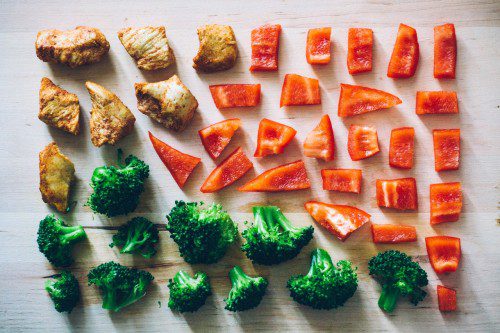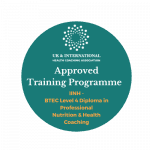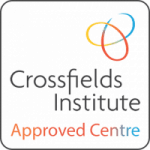Across the world, humans eat a wide variety of diets. It varies across cultures and location from high to low carb, from high to low fat and with varying amounts and types of protein. The bottom line is there is no one way of healthy eating. So it’s no surprise really that there are so many diets out there on the market claiming success. When it comes to 30 days of healthy eating, we are looking at two approaches in this blog today: Paleo and the whole30. The basic idea is that this approach follows certain principles or guidelines that help you to eliminate processed and refined food and increase your intake of fresh fruit, vegetables, nuts, seeds and protein. If you’re looking to get started on 30 days of healthy eating, this might be right up your street.
Why 30 days of healthy eating?
When it comes to paleo or whole30, you often see this idea of 30 days thrown around. The number of days does in fact carry a purpose, even though either of these diets technically could be followed for longer/shorter periods. The idea around 30 days is quite straightforward; it’s the perfect amount of time to start and cement new habits while also allowing your body to reset itself and naturally detox off all the ‘not so great’ foods you might have been used to eating daily before. It’s also enough time for you to see positive changes start to happen and this doesn’t only mean weight loss! Proponents of the diet report better skin, increased energy, strengthened hair/nails, less bloating, stronger immunity and more.
So are these diets something to follow for life? The answer is complicated. While some share concern around cutting out whole food groups, the reality is that you can definitely still get all your nutrients from other foods. The key point, however, is variety. So yes it’s possible but it takes conscious effort. But aside from being possible, is it necessary? The answer is probably not unless you thoroughly enjoy and thrive following this diet. Life is about pleasure and adventure and both diets definitely have certain limits that might prove hard to maintain 100% of the time.
Paleo Explained
So what exactly is the paleo diet? At the core, the diet is based on following principles of eating as set out back in hunter gatherer times, before farming took over circa 10-12k years ago. If you really break it down, this way of eating is an elimination diet i.e. it removes most inflammatory foods, allows the gut to reset and increases nutrient intake for optimal function in terms of energy, hormone balance and so on. While of course, it’s impossible to mimic 100% (no one is going to go out hunting their food), the basic rules are as follows:
What can I eat?
- Animal protein including fish, poultry, wild game, meat, eggs, shellfish etc
- Vegetables
- Fruits
- Nuts
- Seeds
- By default, you also cut out gluten
- Certain oils (quality and processing are taken into consideration)
- Wine in moderation
The basic idea is to eat food that is as close to nature as possible. There is no caloric limit or guidelines so once you are stocked up with the above items, you can eat them as you please. And overall there are a few nice benefits of trying this diet out for 30 days.
- For many, it helps to uncover possible food intolerances when foods that are avoided for 30 days are then retested. Although there are blood tests available, this is still by far the best true marker (and cheapest).
- This diet helps build better eating habits overall: cooking your food, eating more nutrient dense foods, avoiding sugar, eating well balanced meals etc.
- It’s not about cutting or removing but rather making smart replacements that maximise nutrient intake. And what’s even better, there are thousands of online website offering amazing recipes to try including foods you might miss like bread, pancakes etc.
- This diet really helps push you to get back into the kitchen and try new recipes.
What do I need to avoid?
- Anything processed/refined/packaged
- Grains
- Vegetable oils that are likely to damage
- Legumes
- Dairy
- Sugar
And with this ‘avoid’ list, you can start to spot some of the downsides too:
- Restrictive: Paleo can feel very restrictive without doing a good amount of preparation beforehand. People with a history of disordered eating should be wary.
- It can be very tough socially when eating out. (On the plus side, restaurants are much more accommodating these days to special diets so it can be quite easy to make swaps)
- It can be expensive without proper preparation.
- Paleo can feel very limiting and often people zone in on a very small list of foods they then rotate. The whole point is to explore a wide variety and range of foods so just eating chicken/broccoli and coconut oil three times a day isn’t ideal.
- Overall it can be unrealistic to follow long term
- Too many iterations: While the basic principles of paleo are straightforward, there are certain foods that continue to fall somewhere in the middle. For example, canola oil started out as being ok before later being shunned. Similarly, it took potatoes a few years to gain acceptance. And this trend continues which inevitable means there are still some grey lines.
- Paleo can be unhealthy: As the diet gained popularity, a lot of brands came on the market selling paleo approved snacks. While in theory this is an advantage when you’re out and need something quick, the reality is that most of these foods are predominantly made of high sugar dried fruit. Similarly, there are thousands of bloggers creating recipes online using paleo approved ingredients meaning you can pretty much make a paleo version of anything you want. But a brownie is still a brownie so use caution.
What is the Whole30?
When it comes to 30 days of healthy eating, the Whole30 is one of the more popular diets on the market. The whole30 was developed by Melissa and Dallas Hartwig back in 2009. It’s a free programme that basically follows paleo principles. Just like paleo, the programme is designed to increase whole foods in your diet while using the 30 days to essentially reset your health and habits. During this period you pull out all possible ‘problematic’ foods to see what happens to your energy, your sleep, your mood, your cravings etc.
This isn’t a weight loss diet but rather the focus is on health with weight loss as a kind of secondary plus. What’s more is that it helps people become acutely aware of what they are (or were) eating. It forces you to start looking at food labels and making new choices.
Like any diet, there are pros and cons that suit some people more than others. Plus, it depends on your definition of success because a diet is a lot more than just weight loss.
In Summary:
So there you have it: 30 Days of healthy eating with a paleo and/or whole30 approach. Again just to highlight that just because these diets call for you to cut out certain foods doesn’t mean they are unhealthy. Dairy, grains and legumes can and do form part of a healthy diet. Instead, the point is to reset and take a break off the potentially irritating foods and re-introduce them later on. In fact, there are other versions like Mark Sisson’s Primal Diet that do allow for the latter but the type and quality becomes a major factor i.e. using ancient grains or full fat organic dairy products.
At the end of the day, it’s all food for thought! Like we said at the start, there is not one right approach. Bon Appetit!
Recommended reading:
- Whole30 details and Programme Rules: https://whole30.com/whole30-program-rules/
- Robb Wolf: The Paleo Solution
- Diane Sanfilippo: Practical Paleo
Try some of our Paleo-Friendly recipes!











